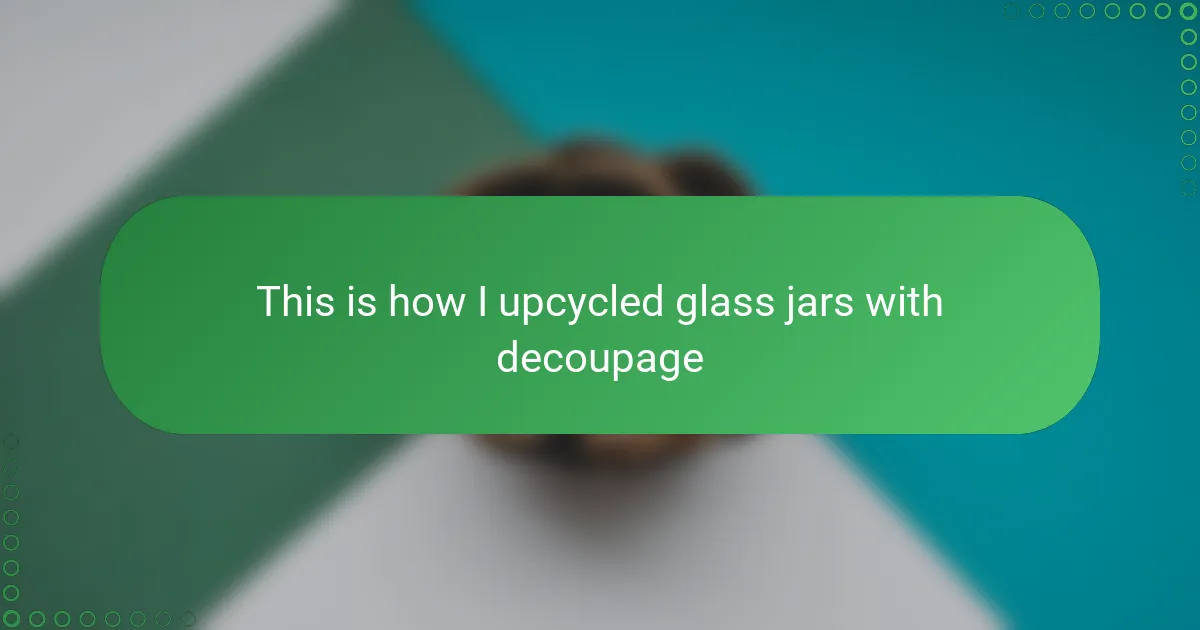Key takeaways
- Handmade paper crafts create a personal and meaningful connection through the tactile and creative process.
- Decoupage involves layering paper cutouts, allowing for creativity and the transformation of everyday objects into unique pieces.
- Preparation is key for successful decoupage; clean surfaces and the right adhesives are crucial for good adhesion and finish.
- Embracing imperfections in crafts can enhance creativity and add character, leading to uniquely beautiful outcomes.

Introduction to handmade paper crafts
Handmade paper crafts have a unique charm that always draws me in. There’s something deeply satisfying about turning simple paper into beautiful, tactile creations with just your hands and a bit of imagination. Have you ever noticed how the texture and weight of handcrafted paper can add such warmth and character to any project?
For me, working with handmade paper feels like connecting with a tradition that spans centuries. It’s not just about the final product; it’s the process—the delicate tearing, the layering, the time spent nurturing each piece—that transforms crafting into a form of mindful art. Doesn’t that hands-on experience make every creation feel more personal and meaningful?
I often find that handmade paper crafts invite endless creativity. Whether you’re embellishing cards, journals, or even glass jars, the possibilities are as limitless as your ideas. Have you tried it yourself? If you haven’t, I promise it’s a rewarding way to express yourself and make something truly one-of-a-kind.

Understanding decoupage techniques
Decoupage is really an art of layering paper cutouts onto surfaces using glue or a special medium, and then sealing it all with varnish or lacquer. I remember the first time I tried it, I was surprised at how forgiving the technique is—you can blend edges and correct mistakes, which made me feel more confident as a beginner. Have you ever worked on a project that allowed you to experiment and learn as you go? That’s exactly what decoupage offers.
What fascinates me most about decoupage is how it transforms everyday objects into personalized treasures. The paper application isn’t just about sticking images on; it’s about creating depth and texture. When I layer handmade paper onto glass jars, I notice how the slight wrinkles and overlaps add character, making each jar uniquely beautiful. Doesn’t that tactile quality give the craft a special magic?
Understanding the mediums is key, too. Choosing the right glue or varnish affects not only the durability but also the finish—whether you want a glossy shine or a soft matte look. I learned early on that patience during drying times makes a huge difference in the final outcome. Have you caught yourself rushing through a project only to realize that slowing down could improve it so much? That’s part of the learning curve in decoupage, and it’s worth embracing.
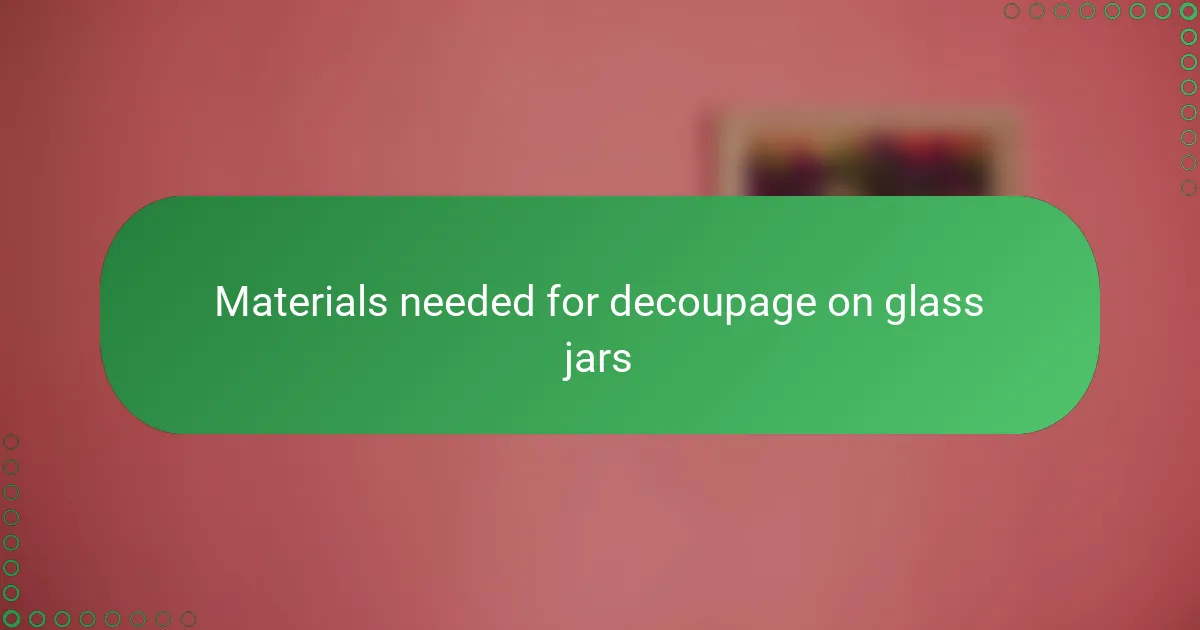
Materials needed for decoupage on glass jars
Gathering the right materials is a big part of what sets a successful decoupage project apart. For glass jars, I always start with smooth, clean jars—any labels or sticky residue need to be completely removed to help the glue adhere properly. Have you ever tried gluing over a grimy surface? It never quite sticks, and that little miss always frustrated me when I was starting out.
Then there’s the glue itself. I prefer using a decoupage medium or a clear-drying craft glue because it’s thick enough to hold the paper securely but still easy to spread without tearing delicate handmade paper. I remember once using regular school glue—it was a sticky mess and didn’t give the smooth finish I wanted. Using the right medium really changed the game for me.
Of course, don’t forget your brushes or foam applicators—they make all the difference when applying glue evenly. I like foam because it’s gentle on the paper and helps avoid wrinkles, which can be a tricky part of working with fragile materials like handmade paper. Have you noticed how a simple tool can improve not just your craft but also your confidence? For me, these small details create a much more enjoyable crafting experience.
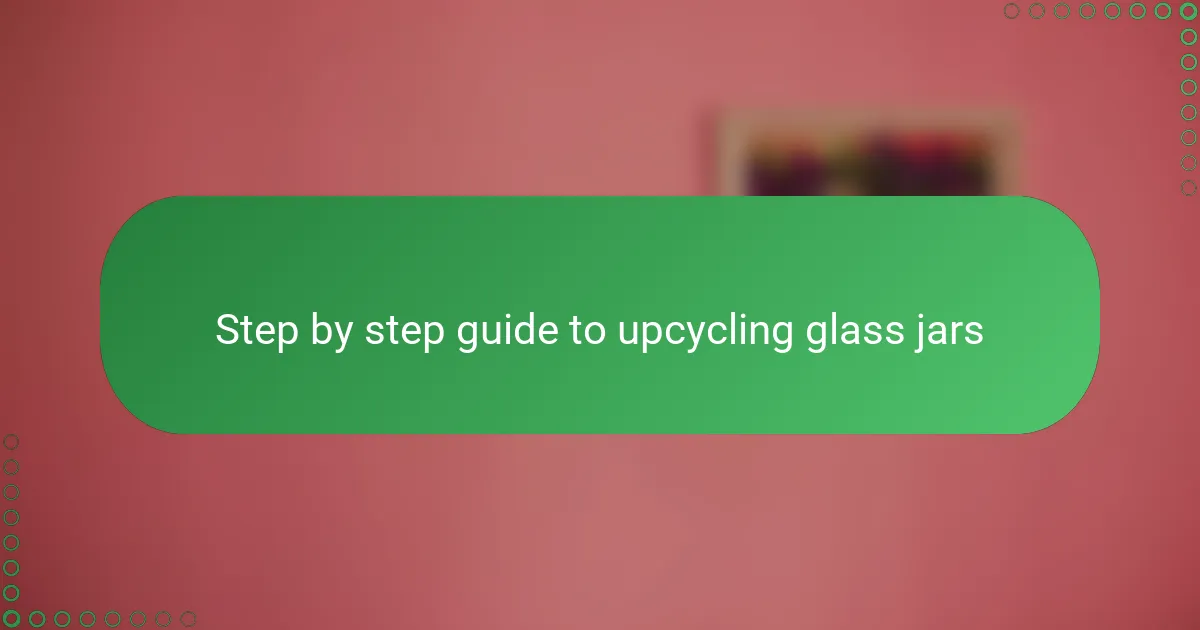
Step by step guide to upcycling glass jars
The first step I take when upcycling glass jars with decoupage is thoroughly cleaning the jar. Removing every trace of labels and sticky residue might seem tedious, but I’ve learned that this preparation makes a world of difference for the glue to grip properly. Have you ever been frustrated by paper peeling off too soon? That’s usually because the surface wasn’t prepped well enough.
Next, I carefully cut out my handmade paper shapes or images, considering how they’ll wrap around the curves of the jar. Applying the glue evenly is where patience truly pays off—I use a foam brush because it spreads the medium gently without tearing, and I take my time smoothing the paper down to avoid bubbles. It’s such a satisfying moment when the paper adheres perfectly; don’t you love that feeling of seeing your vision come alive?
Finally, sealing the design with a protective varnish makes the jar durable and gives it a finished look. I always remind myself not to rush this step, even though waiting can be tough. From experience, I know that letting each layer dry fully builds a stronger, longer-lasting piece. Have you noticed how slowing down your crafting process often leads to better results? It’s one of those counterintuitive lessons I keep coming back to.
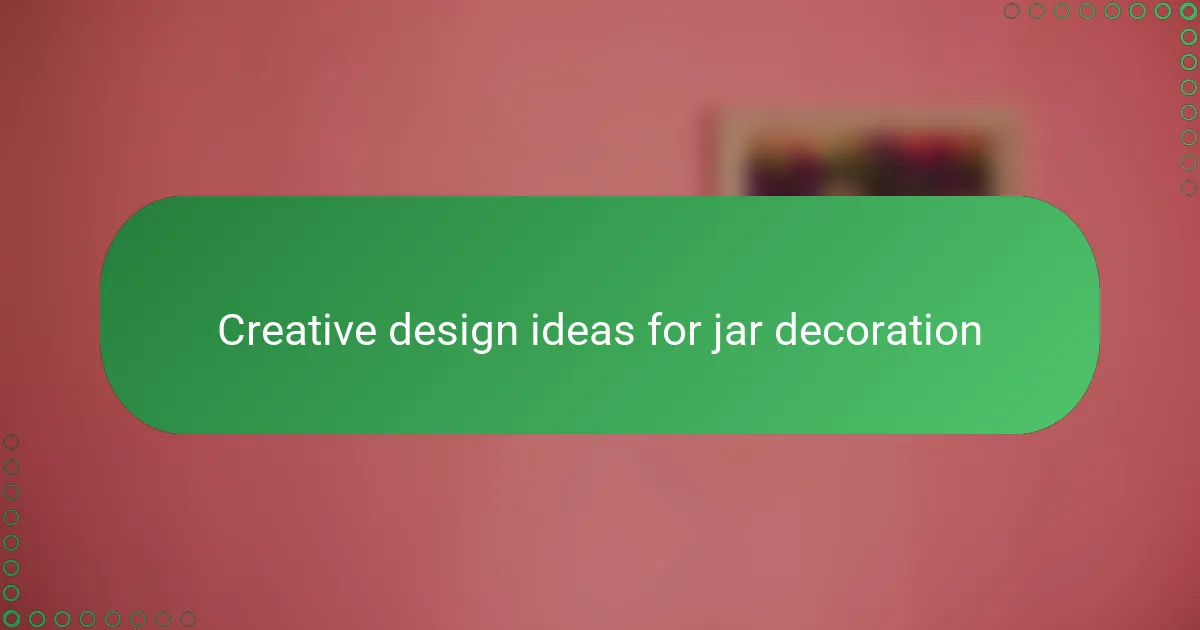
Creative design ideas for jar decoration
When it comes to decorating glass jars, I love playing with layering different paper patterns to create a patchwork effect. Mixing floral motifs with geometric shapes adds an unexpected twist that catches the eye—have you ever combined contrasting designs and been surprised at how well they come together? That blend of old and new really makes each jar feel like a little story wrapped in paper.
Sometimes, I let texture lead the way by crumpling the handmade paper slightly before applying it. This simple trick gives the jar an organic, almost vintage vibe that a smooth finish just can’t match. It’s fascinating how a few wrinkles can transform a plain jar into a character-rich piece—don’t you find that imperfection often makes art feel more alive?
Another idea I cherish is using handmade paper with subtle color gradations or handpainted details that show through translucent jars. The way light filters through adds a magical glow, turning ordinary jars into enchanting luminaries. Have you ever tried experimenting with light and shadow in your crafts? It’s an effect that’s surprisingly easy to achieve but feels truly special every time.

Tips for sealing and finishing your projects
When it comes to sealing your decoupage projects, choosing the right finish can really elevate the look and longevity. I usually opt for a water-based varnish because it dries clear and doesn’t yellow over time—have you noticed how some sealants can change the colors of your paper? A good sealant protects your work while keeping those delicate handmade textures visible, which I find essential.
Applying multiple thin coats rather than one heavy layer has always made a big difference in my experience. It may feel slow, but each thin layer builds strength without risking runs or bubbles. Have you ever tried rushing through sealing only to end up with a sticky or uneven surface? Patience here definitely pays off.
Finally, finishing touches like sanding lightly between coats can smooth out any rough spots and give a professional feel. I remember the first time I skipped this step; the surface felt a bit gritty and less refined. Taking those extra minutes to polish my jars always leaves me more satisfied with the outcome—don’t you think those small details make your handmade projects truly shine?
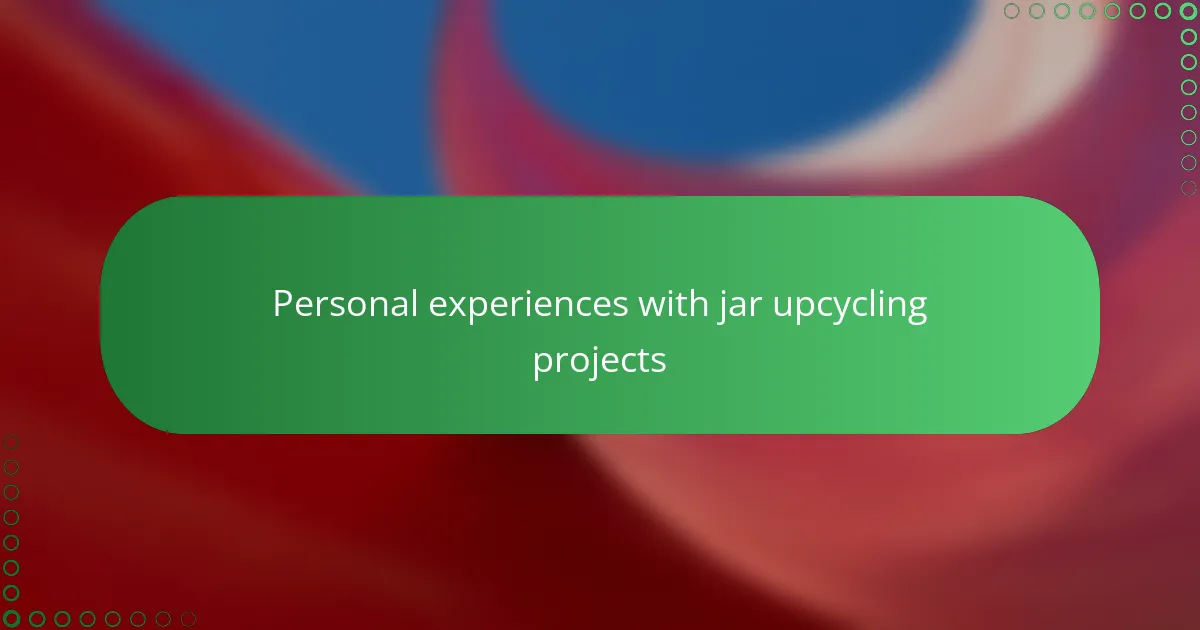
Personal experiences with jar upcycling projects
I still remember the first time I upcycled a glass jar with decoupage—it was a bit messy, with glue seeping out and paper misaligned. But that imperfect jar holds a special place on my shelf because it marked the start of a creative journey. Have you ever been surprised by how a seemingly simple project can turn into a treasured keepsake despite its flaws?
Over time, I’ve learned that each jar tells a story of patience and experimentation. Once, I layered delicate, hand-torn paper onto a curved jar, and the wrinkles that formed actually added character rather than ruining the look. Isn’t it fascinating how small “mistakes” can become defining features when you embrace them?
Sometimes, working on jar upcycling projects has felt like a quiet form of meditation for me. The rhythm of applying glue, smoothing paper, and waiting for it to dry helps me slow down and focus. Do you find that crafting projects like these offer a much-needed pause in our busy lives? For me, they’re more than crafts—they’re little moments of calm and satisfaction.
